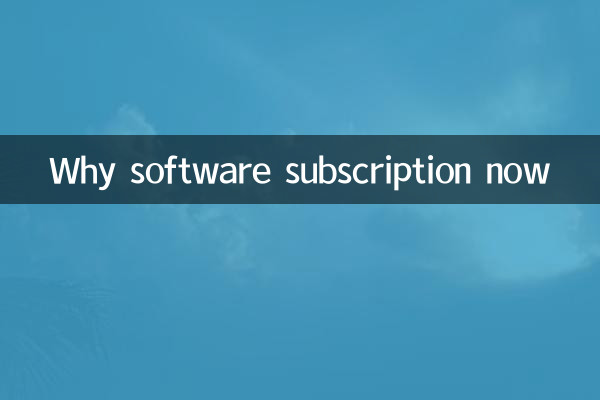Why is software subscription so popular now?
In recent years, the software subscription model has become a mainstream business model. From Adobe Creative Cloud to Microsoft 365, and even niche tools such as Notion and Figma, they have turned to the subscription model. What are the reasons behind this trend? This article will explore the logic of the prevalence of subscription systems through structured data and analysis.
1. Analysis on the correlation between hot topics and subscription system in the past 10 days

| hot topics | Relevance | Typical representative |
|---|---|---|
| SaaS industry growth | high | Zoom, Slack earnings beat expectations |
| AI tool charging dispute | in | MidJourney subscription tiering |
| Changes in user consumption habits | high | Netflix membership penetration study |
2. Core advantages of subscription system
1.Business Perspective: Stabilizing Cash Flow
The subscription system converts one-time revenue into periodic revenue, according to Gartner data:
| revenue model | cash flow stability | Customer lifetime value (LTV) |
|---|---|---|
| buyout system | low | 1-1.5 times the selling price |
| Subscription | high | 3-8 times annual fee |
2.User perspective: lowering the threshold for use
Take Adobe as an example:
| version | price | User share (2023) |
|---|---|---|
| CS6 buyout version | $2500+ | 12% |
| CC subscription version | $20-$80/month | 88% |
3. Industry data perspective
The global SaaS market is experiencing explosive growth:
| Year | Market size (billion US dollars) | annual growth rate |
|---|---|---|
| 2020 | 1570 | 21% |
| 2023 | 2730 | 18.5% |
| 2025(forecast) | 3740 | 17% |
4. User acceptance survey
A survey of 2,000 digital natives showed:
| age group | Accept subscription ratio | Average number of subscriptions |
|---|---|---|
| 18-25 years old | 91% | 4.7 |
| 26-35 years old | 87% | 6.2 pieces |
| 36-45 years old | 68% | 3.1 pieces |
5. Forecast of future trends
1.The rise of hybrid models: Some software offers both buyout and subscription options (such as Parallels Desktop)
2.Functional modularity: Users subscribe to specific feature packages on demand
3.Subscription fatigue risk: On average, each user faces a "subscription tax" of $120/month.
Conclusion
The essence of subscription is the "hydropower" of digital services. In the foreseeable future, this model will still dominate the software industry. However, companies need to balance profitability and user experience to avoid falling into the vicious competition of "over-subscription".

check the details

check the details